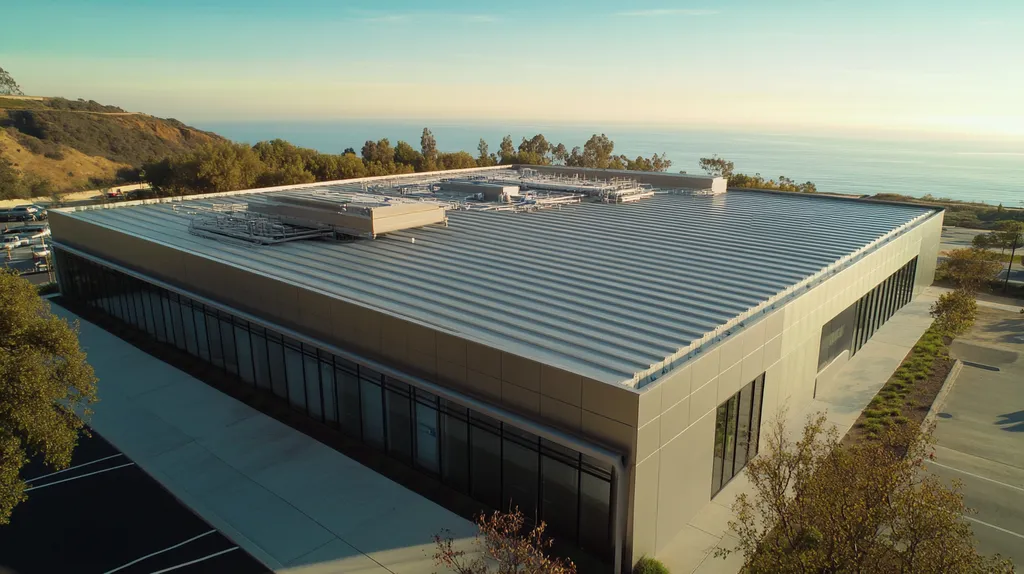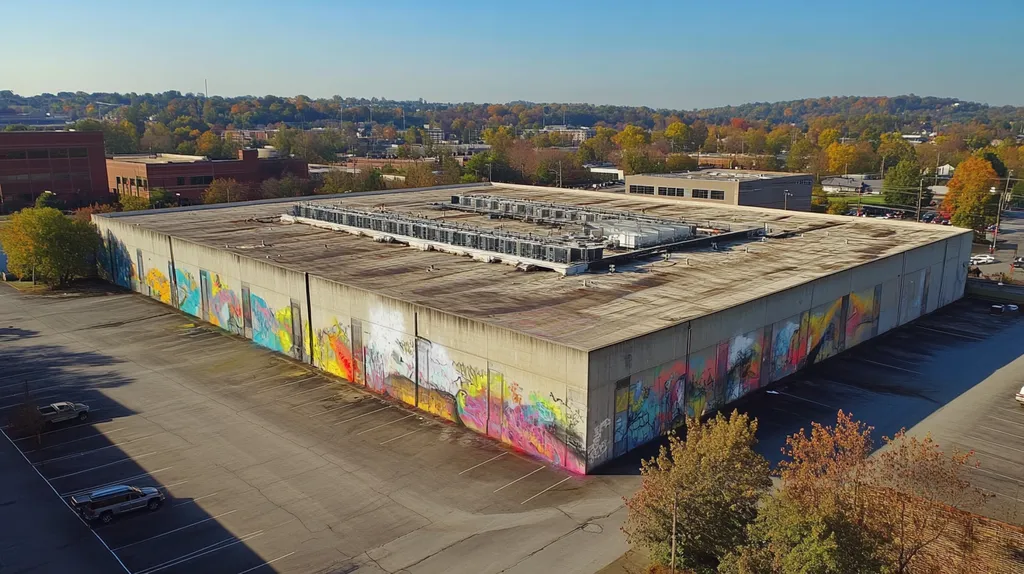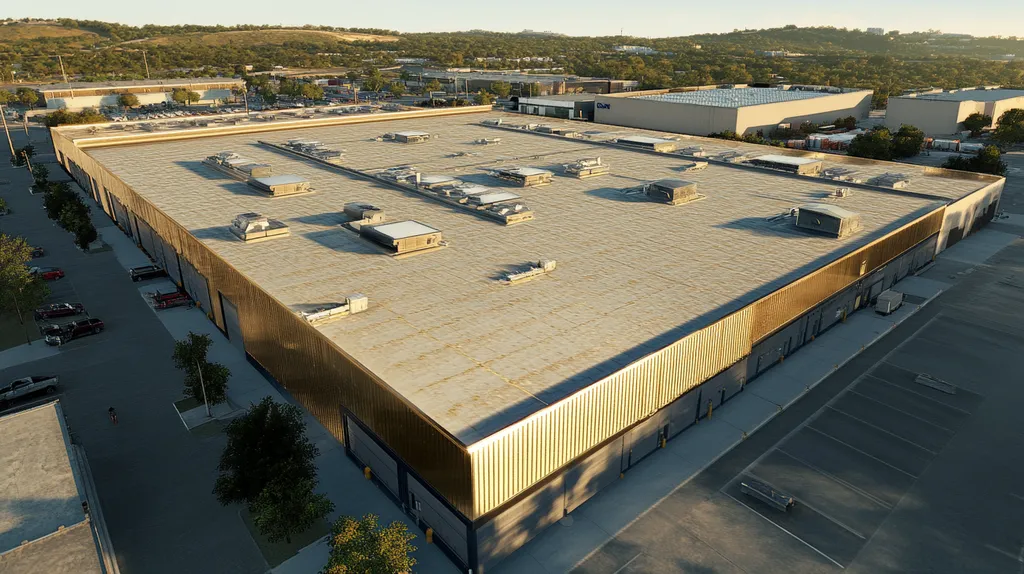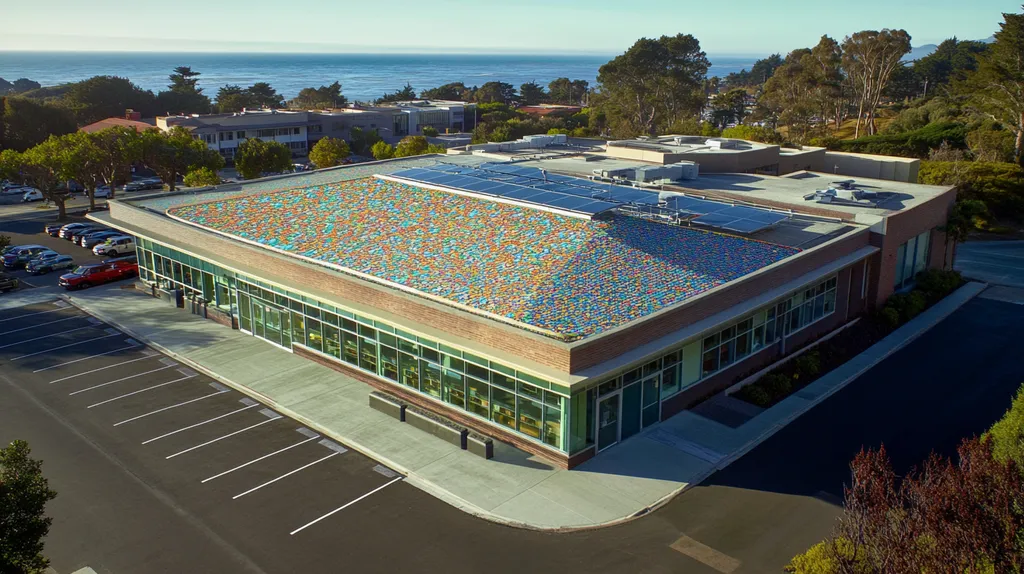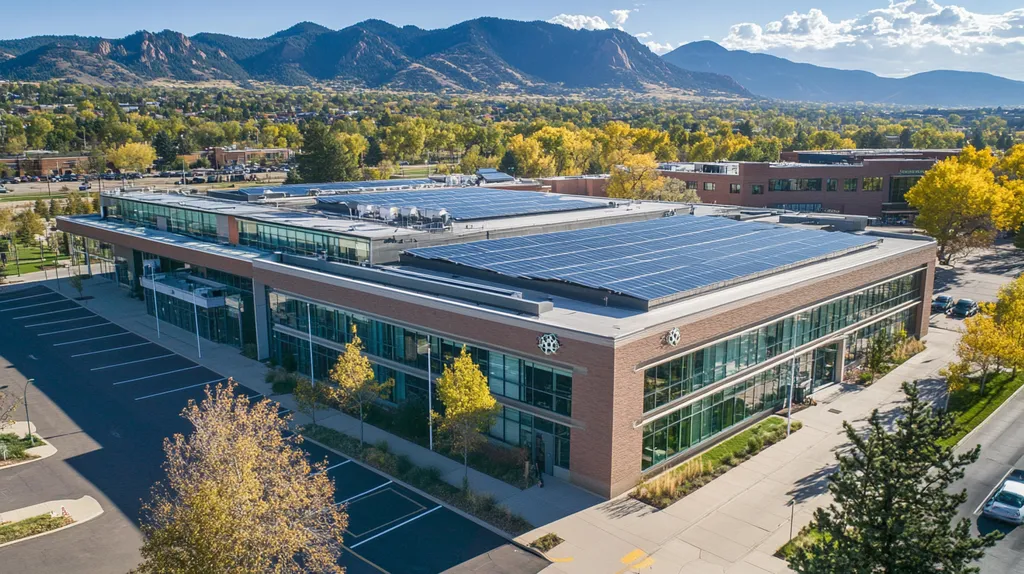In an era where commercial building fires cause over $2.6 billion in annual damages, understanding fire retardant roofing materials isn’t just about compliance—it’s about survival. Yet persistent myths continue to shape critical decisions about roofing materials, often with devastating consequences.
From misconceptions about metal roofs attracting lightning to false assumptions about TPO durability, these industry myths put properties and lives at risk while driving up costs.
This comprehensive analysis exposes common fallacies, examines their practical implications, and presents evidence-based alternatives that enhance both safety and performance in commercial roofing applications.
SECTION 1: COMMON MISCONCEPTIONS
In the realm of commercial roofing, misconceptions can jeopardize safety and performance. Misinformation can lead to poor choices that drive up costs and compromise building integrity. It’s crucial to dispel myths around metal roofs and their relation to lightning strikes, the real fire resistance of asphalt shingles, and the durability of TPO roofing materials against chemicals. Clearing up these misunderstandings empowers property owners and facility managers to make well-informed roofing decisions that enhance safety and longevity.
Metal Roofs and Lightning Attraction
One of the most persistent myths in roofing is that metal roofs attract lightning more than other materials. In reality, lightning typically strikes the highest point in a landscape, regardless of roofing material. Comprehensive studies show that installing a metal roof does not enhance the likelihood of a lightning strike.
In fact, metal roofs can boost safety thanks to their non-combustibility. This characteristic allows them to endure extreme fire and heat, which is especially beneficial during storms. Property owners should prioritize these benefits, focusing on energy efficiency and durability when considering roofing options.
Proper installation techniques can further minimize any perceived risks. Incorporating lightning rods into the roofing design provides an additional layer of protection and serves to reassure property owners that metal roofs are both wise and aesthetically pleasing choices.
It’s critical to shift the conversation from baseless fears to the tangible advantages of metal roofs, enabling informed decisions that prioritize safety and performance.
Fire Resistance of Asphalt Shingles
There’s a prevalent belief that asphalt shingles inherently offer significant fire resistance, which often exaggerates their capabilities. While some asphalt shingles are rated Class A for fire resistance, many others do not meet the stringent safety standards needed to ensure safety. Therefore, it’s vital for property owners to meticulously review product specifications.
The flame spread rating is an essential consideration, as it indicates how quickly flames can travel across a surface. Misunderstanding this rating can lead to higher risks, particularly in wildfire-prone regions. Selecting the right asphalt shingle with adequate fire resistance can make a critical difference in safety.
Moreover, installing a quality underlayment can further bolster fire resistance. This layer acts as an added barrier against flames and enhances protection for the underlying materials. Facility managers should always seek shingles and accessories that carry the proper fire ratings.
By diligently assessing fire resistance ratings and installation methods, property owners can reduce risks and enhance the overall safety of buildings, creating a more secure environment against potential fire hazards.
TPO Roofing and Chemical Exposure
Thermoplastic Olefin (TPO) roofing systems have gained traction for their energy efficiency and cost-effectiveness, yet misconceptions remain about their resistance to chemical exposure. Initial formulations of TPO may have had limitations, fueling the belief that these roofs are unfit for commercial applications.
Today’s TPO roofing materials have evolved significantly. Manufacturers have developed advanced blends that excel in resisting common industrial chemicals. Some modern formulations even meet or exceed industry chemical resistance standards, expanding their usability across a variety of sectors.
Property owners must also implement effective maintenance and chemical management strategies to further limit exposure risks with any roofing material. Regular inspections and timely repairs can significantly extend the lifespan of TPO roofs while maintaining safety.
By evaluating TPO options based on the latest performance metrics instead of outdated views, property owners can make strategic decisions that enhance roofing sustainability and durability. With the right approach, TPO roofs can provide an invaluable combination of efficiency and resilience in commercial settings.
SECTION 2: PRACTICAL IMPLICATIONS
The choice of fire retardant materials in commercial roofing is more than a compliance formality; it’s a cornerstone of building safety and resilience. Alarming statistics reveal that over 70% of commercial building fires start from roofing failures. The consequences of relying on non-fire retardant materials can be catastrophic, resulting in extensive property damage, potential legal challenges, and, most importantly, threats to human life. Being aware of these impacts, from safety compliance to property values, is essential for those making decisions in the industry.
Impact on Building Safety and Compliance
Ensuring occupant safety and adhering to fire safety regulations are non-negotiable for any commercial property owner. Fire retardant materials substantially decrease the flammability of roofing systems, granting critical extra time for evacuation in emergencies. Buildings that fail to use compliant materials risk facing severe penalties and fines from regulatory agencies.
The National Fire Protection Association (NFPA) outlines specific fire-resistant ratings for commercial roofs. Failure to meet these ratings can result in significant penalties and increased scrutiny from local fire marshals. Upholding compliance not only safeguards lives but also protects business operations from costly interruptions.
Property owners must view investing in fire retardant materials as a pivotal element of their safety strategy, rather than as a mere suggestion. This proactive choice underscores the need to select roofing materials that meet established compliance standards, ensuring a secure environment for everyone involved.
In essence, the ramifications of neglecting fire retardant materials are profound. Adherence to safety regulations not only protects people but also affirms the building owner’s commitment to a safe and secure space.
Effects on Energy Efficiency and Maintenance
Interestingly, fire retardant materials can significantly influence both energy efficiency and maintenance expenses. Roofs constructed with heat-reflective and fire-resistant materials not only withstand extreme temperatures more effectively but also help lower cooling costs. Research suggests that reflective roofing systems can reduce energy bills by up to 30% in optimal conditions.
Additionally, roofs incorporating fire retardant materials tend to enjoy a longer lifespan, meaning fewer repairs and replacements are required. This durability translates to less investment in labor and resources over time. In high-demand environments like industrial facilities, the cost savings from reduced maintenance can be considerable.
By selecting fire retardant roofing options, facilities managers can curtail the risks of premature wear due to heat exposure, leading to a more efficient operation while prioritizing safety and financial health.
Ultimately, adopting fire retardant materials is not just about safety; it represents a strategic investment in energy efficiency and overall sustainability, enhancing the financial viability of the property.
Consequences for Property Value and Insurance
The integration of fire retardant materials is crucial beyond just ensuring safety—it directly affects property value and insurance costs. Buildings that proactively invest in compliant roofing systems are often perceived more favorably in the real estate market. Today’s buyers are increasingly informed, and fire safety features significantly boost a building’s appeal and potential resale value.
Moreover, insurance providers frequently offer lower premiums for properties equipped with fire retardant materials. The logic is straightforward: less risk equates to reduced costs for insurers. Over time, this can result in substantial savings for the property owner.
In contrast, properties without such safety measures may face higher insurance premiums, leading to increased operational costs. This disparity emphasizes the importance for property owners to reassess their roofing materials with a clear focus on their financial implications.
In summary, investing in fire retardant materials not only preserves the integrity of commercial buildings but also plays a pivotal role in enhancing their overall financial health and market presence.
SECTION 3: COST OF MISINFORMATION
The consequences of misinformation when selecting fire retardant materials for commercial roofs can be dire. Misguided choices lead not only to significant financial losses but also jeopardize safety and increase the risk of catastrophic facility damage. Alarmingly, a recent survey indicates that nearly 30% of commercial property owners have endured financial penalties linked to fire incidents due to inadequate roofing materials. Recognizing the true costs associated with misinformation is essential for making informed decisions in commercial roofing.
Financial Burden of Incorrect Material Choices
Misinformation about fire retardant materials can cause property owners to incur unexpected financial burdens. Selecting substandard materials may seem like a cost-saving measure initially, but it can result in disastrous outcomes during a fire. This not only risks property but also triggers costly repairs and sky-high insurance premiums.
Moreover, if a roof fails due to insufficient fire protection, the consequent need for a complete roof replacement can result in expenses running into thousands of dollars. These costs far outweigh any initial savings from choosing inferior products.
Incorrect material choices can also hinder property resale value. Prospective buyers often hesitate to invest in properties with a history of fire incidents or materials that fail to meet safety standards. As a result, owners may face diminished property worth and lost investment opportunities.
Ultimately, investing in high-quality, fire retardant materials is a proactive strategy that pays off in both safety and financial stability.
Long-Term Maintenance and Repair Costs
Inaccurate information about fire retardant materials can lead to escalating long-term maintenance and repair costs, placing a heavy burden on facility managers. Low-grade materials often require frequent repairs or replacements much sooner than their higher-quality counterparts, creating a cascade of unexpected expenses.
Additionally, materials failing to meet safety standards can exacerbate wear and tear. For instance, roofs damaged in a fire can lead to extensive repairs that could have been avoided with better initial choices, thereby causing unplanned disruptions and further costs.
Facility managers must also factor in the potential loss of productivity during necessary repairs. Operations may need to pause while restoration occurs, resulting in additional financial losses. Each incident not only impacts the bottom line but can also harm relationships with clients and stakeholders.
Investing in the right fire retardant materials can significantly reduce long-term maintenance needs, ensuring a safer, more cost-effective roofing solution over time.
Potential for Litigation and Liability
Inadequate fire protection on commercial roofs can expose property owners to considerable legal risks. If a fire erupts and is traced back to the use of substandard materials, the potential for lawsuits from tenants, customers, or stakeholders is high, leading to intense financial repercussions.
Insurance companies may decline claims if property owners fail to comply with fire safety regulations. This can result in dire outcomes for businesses relying on coverage after a fire, as they grapple not only with the damage but also with steep legal costs.
Furthermore, poor decisions about roofing materials can even contribute to halting operations due to legal disputes. Such interruptions can severely hinder business continuity and financial stability.
The choice of fire retardant materials is critical, not only for safety but also for protecting against potential litigation. This underscores the urgent need for informed decision-making in the selection of roofing materials.
SECTION 4: REALITY CHECK
In an era where fire safety is paramount, understanding fire resistance ratings is not just beneficial; it’s essential for making informed commercial roofing choices. Property owners must grasp the nuances of various materials and how they perform under extreme conditions. Misunderstandings can lead to costly mistakes and safety risks, making accurate knowledge about fire retardant materials critical in real-world applications.
Fire Resistance Ratings Explained
Fire resistance ratings detail how long a roofing material can endure exposure to flames, providing vital insight for property owners. These ratings are broken down into categories: Class A, B, C, and Unrated. Class A materials offer the highest protection, making them essential for buildings in fire-prone areas, such as industrial zones.
Understanding these classifications ensures compliance with local building codes and insurance requirements. It’s important to recognize that the testing procedures for these ratings are rigorous, yet they do not guarantee performance under all conditions. Many mistakenly think a higher rating ensures superior protection, but real-world variables can significantly impact a material’s effectiveness.
To avoid pitfalls, it’s wise for property owners to conduct thorough research beyond surface-level ratings. Consulting industry professionals ensures that practical considerations align with safety needs, ultimately safeguarding both investments and lives.
Actual Performance of Metal and TPO Roofs
Metal roofs are often praised for their high fire resistance, yet their effectiveness varies based on design and installation quality. Properly coated metal can reflect heat effectively, reducing fire risk, but poor installation can negate these benefits.
Thermoplastic Olefin (TPO) roofs also boast fire-resistant properties; however, performance hinges on factors like thickness and color. Lighter-colored TPO generally provides better reflectivity, but installations fail when not properly secured, leaving vulnerabilities.
Both metal and TPO materials demonstrate commendable performance in controlled tests, but real-world conditions—like accumulation of debris and maintenance issues—can significantly compromise their efficacy. Recognizing these nuances allows property owners to make informed choices that prioritize both safety and resilience.
Furthermore, routine inspections and upkeep are vital to ensure that these roofing materials maintain their fire-resistant qualities over their lifespan, providing essential protection for the entire building.
Importance of Material Composition and Coatings
The composition of roofing materials greatly influences their fire resistance capabilities. Many roofing products contain additives specifically designed to enhance performance; for instance, gypsum-based materials offer a natural barrier against flames.
Coatings applied to roofing surfaces can also markedly affect fire resistance. Fire-retardant coatings not only enhance the fire safety of the base material but also contribute to weather resistance and prolonged durability.
It is crucial for property owners to select materials and coatings backed by proven effectiveness. Some coatings may falter under extreme heat or diminish over time, undermining their protective capabilities.
By consulting roofing professionals and reviewing performance data, property owners can confidently choose the right materials. Prioritizing high-quality selections and regular maintenance safeguards structures against the risks of fire and enhances overall safety.
SECTION 5: EVIDENCE-BASED ALTERNATIVES
In an era marked by heightened fire risks, selecting the right roofing materials is absolutely crucial for ensuring safety and minimizing insurance costs. Buildings constructed with Class A-rated materials tend to endure fire exposure for longer periods, significantly reducing potential damage. Fire ratings aren’t just industry jargon; they represent vital safety and financial elements that should inform every roofing decision. This section delves into reliable, research-supported alternatives to traditional roofing materials, equipping facility managers with the necessary knowledge for informed choices.
Class A-Rated Materials like TPO and Metal
Among the best choices for commercial roofing are TPO (Thermoplastic Olefin) and metal systems, both boasting Class A fire ratings. These materials not only resist flames but also show enhanced durability compared to standard options. TPO roofs are gaining popularity, thanks to their reflective properties that help reduce energy expenses while maintaining fire safety.
Metal roofs, on the other hand, offer non-combustibility and are lightweight, making them an eco-friendly alternative. The inherent fire-resistant qualities of metal add another layer of safety against fire outbreaks. Opting for either of these materials bolsters a building’s resistance to fire hazards significantly.
Importantly, many municipalities are now incentivizing insurance reductions for properties that feature Class A-rated materials. This proactive choice not only bolsters safety but can also translate into notable savings on insurance premiums over time.
Choosing Class A-rated materials like TPO and metal offers more than just compliance; it’s a strategic investment in a building’s resilience and future stability.
Benefits of Advanced Roofing Technologies
As the industry evolves, innovative roofing technologies provide safer, fire-resistant alternatives. For example, hybrid roofing systems, which incorporate various materials, can amplify thermal resistance and fire safety. By merging different material strengths, these systems optimize performance against fire hazards.
Many new roofing membranes now include fire-retardant additives that enhance their resistance to flame spread. These advancements effectively tackle fire risks while also mitigating issues such as UV degradation and weathering, ensuring comprehensive protection.
Furthermore, these technological innovations simplify installation and repairs, minimizing operational downtime. Newly developed materials can increase the lifespan of roof membranes, translating to fewer replacements and lower long-term maintenance costs.
Taking into account these advanced roofing technologies allows facility managers to make informed decisions, enhancing both safety and efficiency while capitalizing on the latest market innovations.
Case Studies of Successful Fire-Resistant Roofs
Numerous commercial properties have effectively adopted fire-resistant roofing materials with impressive outcomes. For instance, a large retail center in California implemented a TPO roof, drastically lowering the risk of fire damage in a wildfire-prone area. Following the installation, they enjoyed reduced insurance premiums and improved overall building safety.
In another case, an industrial facility selected a metal roofing system equipped with fire-resistant insulation. This strategy not only ensured structural integrity but also boosted energy efficiency, resulting in substantial operational cost savings.
Both examples underscore the importance of choosing suitable roofing materials tailored to local fire risks and regulations. By investing in fire-resistant roofs, facility managers guarantee not just safety but also substantial long-term financial gains.
These real-world instances illustrate that opting for advanced fire-resistant roofing isn’t merely a safety measure; it’s an investment that can yield tangible returns.
SECTION 6: TEST AND VERIFY
In the high-stakes world of commercial roofing, ensuring that fire retardant materials meet safety standards is absolutely paramount. With the National Fire Protection Association reporting over 100,000 commercial fires every year, the potential for devastating property damage and loss of life demands immediate attention. Misunderstandings about fire resistance can compromise the safety and performance of roofing systems. This section will delve into standard testing procedures, the critical importance of regulatory standards, and effective on-site verification methods that can help mitigate these risks.
Standard Fire Resistance Tests and Procedures
Standard fire resistance tests are essential for evaluating how well roofing materials can endure fire exposure. These tests replicate real-world fire scenarios, measuring material performance against specific criteria. The ASTM E108 test is the most widely used for commercial roofs, assessing fire spread and the risk of flame penetration.
The results of these tests are invaluable for property owners, empowering them to select materials that not only comply with regulations but also prove their efficacy in emergencies. Understanding these tests equips facility managers to make decisions that prioritize safety, compliance, and durability.
Manufacturers frequently publish test data, but property owners must recognize that not all tests measure the same criteria. Some assessments may be more applicable to specific roofing applications. A careful review of test reports can reveal critical insights, guiding material selection and installation tactics.
In short, leveraging standardized tests enhances decision-making related to fire risk, ensuring a proactive approach to building safety.
Role of ASTM and Other Regulatory Standards
The American Society for Testing and Materials (ASTM) is instrumental in establishing standards for fire retardant materials, ensuring compliance with industry benchmarks. Roofing materials that adhere to ASTM D6083, for instance, are specifically formulated for maximum fire resistance and suitability for roofing applications.
Moreover, compliance with local building codes, which often reference ASTM standards, is crucial for maintaining safety. Property owners who overlook these regulations risk facing severe legal liabilities and increased insurance costs.
Understanding the implications of these standards can steer property owners toward proper material choices. It also aids project planning by identifying critical compliance dates that must be observed.
Staying informed about updates to ASTM and other regulatory standards is equally important. As advancements in technology emerge, the methods and materials for fire protection evolve, making routine reviews necessary to uphold safety standards.
On-Site Testing and Inspection Methods
On-site testing and inspections are critical to verifying the performance of fire retardant materials. Regular assessments can identify potential issues that may endanger fire safety, such as improper installation or material degradation over time. Common inspection methods include visual examinations, infrared thermography, and core sampling.
These techniques provide real-time evaluations of roofing systems. For example, infrared thermography can pinpoint areas of heat accumulation, signaling potential vulnerabilities in fire resistance. Being proactive in conducting these assessments can substantially reduce risk.
In addition to routine inspections, engaging third-party testing organizations provides an extra layer of assurance regarding compliance with fire safety standards. Independent evaluations offer unbiased insights into material performance, bolstering property owners’ confidence in their choices.
Ultimately, committing to a regular schedule of testing and inspections not only protects property but also safeguards lives, reinforcing the significance of diligence in fire safety practices.
Moving Forward
With fire-related property damage reaching historic levels and insurance costs soaring, the commercial roofing industry stands at a critical crossroads regarding fire retardant materials.
The evidence demonstrates that widely-held misconceptions about metal roofs, TPO systems, and asphalt shingles continue driving dangerous and costly decisions.
By embracing evidence-based alternatives like Class A-rated materials and implementing rigorous testing protocols, facility managers can dramatically reduce fire risks while optimizing their investment.
The stakes couldn’t be higher – each year of delay in adopting proper fire retardant materials puts billions in assets at risk.
The path forward requires steadfast commitment to dispelling myths, following regulatory standards, and prioritizing fire safety in every commercial roofing decision.
FREQUENTLY ASKED QUESTIONS
Q. Do metal roofs attract lightning more than other commercial roofs?
A. No, metal roofs do not inherently attract lightning. Lightning strikes the highest point in a landscape, irrespective of the roofing material. Moreover, metal roofs are non-combustible and resilient, offering crucial fire safety benefits and energy efficiency that outweigh any concerns about lightning attraction.
Q. How do fire retardant materials impact building safety and compliance?
A. Fire retardant materials significantly enhance safety by delaying flame spread, providing critical time for evacuation. Compliance with fire safety regulations is essential; failing to meet these standards can result in hefty fines. Investing in quality materials demonstrates a commitment to safety, reducing risks for occupants and protecting property.
Q. What costs arise from misinformation about fire retardant materials?
A. Misinformation can lead to expensive roof failures and increased insurance premiums. Substandard materials may initially appear cost-effective, but poor fire performance can necessitate costly repairs, upgrades, or even total roof replacements. Overall, investing in proper fire retardant materials ensures both safety and financial stability for property owners.
Q. What are fire resistance ratings and why do they matter?
A. Fire resistance ratings indicate how long a roofing material withstands exposure to fire. These ratings are critical for compliance with local building codes, ensuring safety, especially in fire-prone areas. Understanding these ratings helps property owners select appropriate materials that fulfill safety and insurance requirements.
Q. Can TPO roofing be considered a reliable fire-resistant option?
A. Yes, TPO roofing is a reliable fire-resistant option, especially when it meets Class A fire ratings. With advancements in material formulations, TPO has become effective against fire hazards while also offering energy efficiency benefits. Proper installation and maintenance further enhance its performance in commercial applications.
Q. How can I ensure fire retardant materials are correctly tested?
A. To ensure compliance, review standard tests like ASTM E108 for fire resistance. Seek materials that meet ASTM and local building code requirements. Regular on-site inspections, including independent evaluations, can verify that materials maintain efficacy over time, bolstering safety and compliance in your roofing system.
Q. What innovative fire-resistant roofing materials should I consider?
A. Consider advanced materials like hybrid roofing systems, which combine the strengths of various products to enhance fire resistance. Additionally, newer membranes with fire-retardant additives significantly improve safety while also addressing concerns related to UV degradation and longevity. These innovations address both fire risks and long-term durability needs in commercial roofs.

